Chattanooga, Tenn. (Nov. 13, 2023) – The endless parade of sunny, cloudless days in Chattanooga for the last two months may seem like the stuff of dreams to anyone planning an outdoor activity. However, this fall has turned into a blue-sky nightmare for aquatic species living in smaller creeks and streams.
“Some of those headwater pools are going to dry up, and we’ll lose large numbers of populations,” says Dr. Bernie Kuhajda, an aquatic conservation biologist at the Tennessee Aquarium Conservation Institute. “It just doesn’t look good for our headwater fish communities out there. They’re really getting stressed.”
Less than half an inch (0.42 inches) of rain fell in Chattanooga during a 72-day span between Aug. 30 and Nov. 9, according to meteorological data recorded at Lovell Field. That’s just 0.16 inches more than fell in Death Valley, California, during the same period, according to the National Oceanic and Atmospheric Administration (NOAA).
As of the latest weekly report by the government’s U.S. Drought Monitor, most of Hamilton County is now considered to be experiencing a D4 or “exceptional” drought, the Monitor’s most severe drought category.
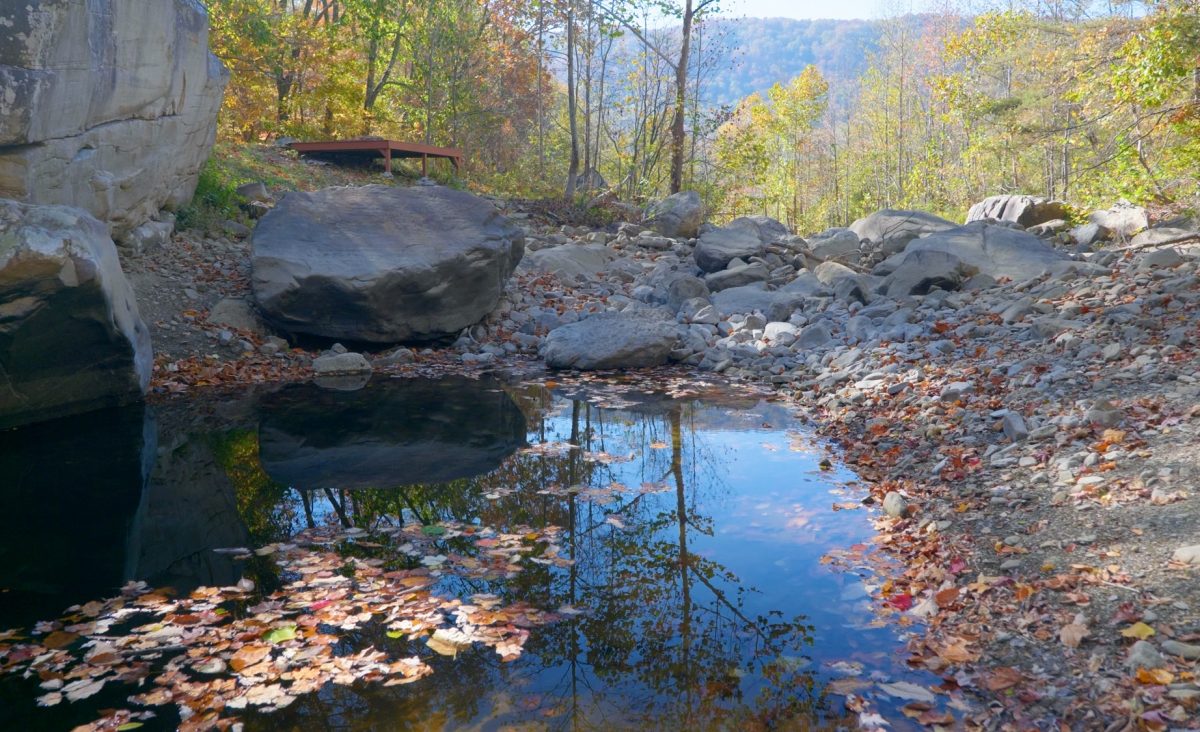
Extreme drought conditions have dried up many streams or reduced them to a series of isolated pools, including Board Camp Creek, Middle Creek, and Suck Creek.
That’s really, really bad news for endangered fish species like the Barrens Topminnow and Laurel Dace. Scientists consider the Laurel Dace to be the second-most-imperiled fish east of the Mississippi River — among the top 10 nationwide — and is now found in just two streams on Walden Ridge.
These species are especially at risk during droughts since their ranges are already limited to just a handful of small, headwater streams, many of which now have drastically reduced — or even nonexistent — water flow.
When drought conditions persist for long periods, reduced water volume can cause a cavalcade of problems for fishes.
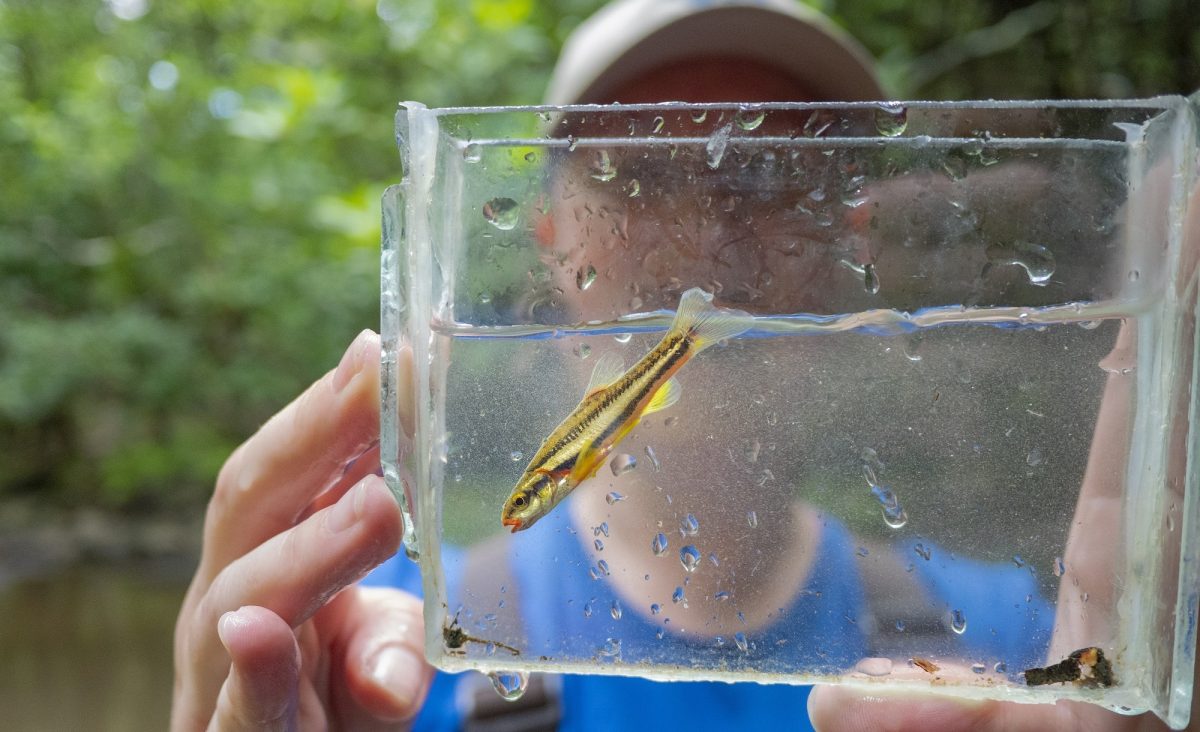
A biologist from the Tennessee Aquarium Conservation Institute holds an endangered Laurel Dace during a population survey in 2020. This species is considered by biologists to be one of America’s ten most-endangered fish species. It now is found on Walden Ridge in just two streams, which are drying up due to exceptional drought conditions in Southeast Tennessee.
In large enough quantities, water is a stable thermal environment, being slow to lose or gain heat. Without the benefit of rainfall, streams with less water are more likely to swing wildly between nighttime and daytime temperature extremes, which can stress the animals that call them home.
The lack of aquatic real estate also means less available oxygen and crowded quarters, Dr. Kuhajda says.
“Think if all your neighbors on your block all the sudden started living in your house with you — you’d be stressed,” he says. “Just the fact that all these fish bodies are in a small area is stressful.”
The list of problems is seemingly endless:
- Greater risk of predation by opportunistic anglers like wading birds and raccoons
- Fewer aquatic insects and other prey items fish rely on to fuel themselves during spawning season
- Less genetically robust populations thanks to the loss of individual fish
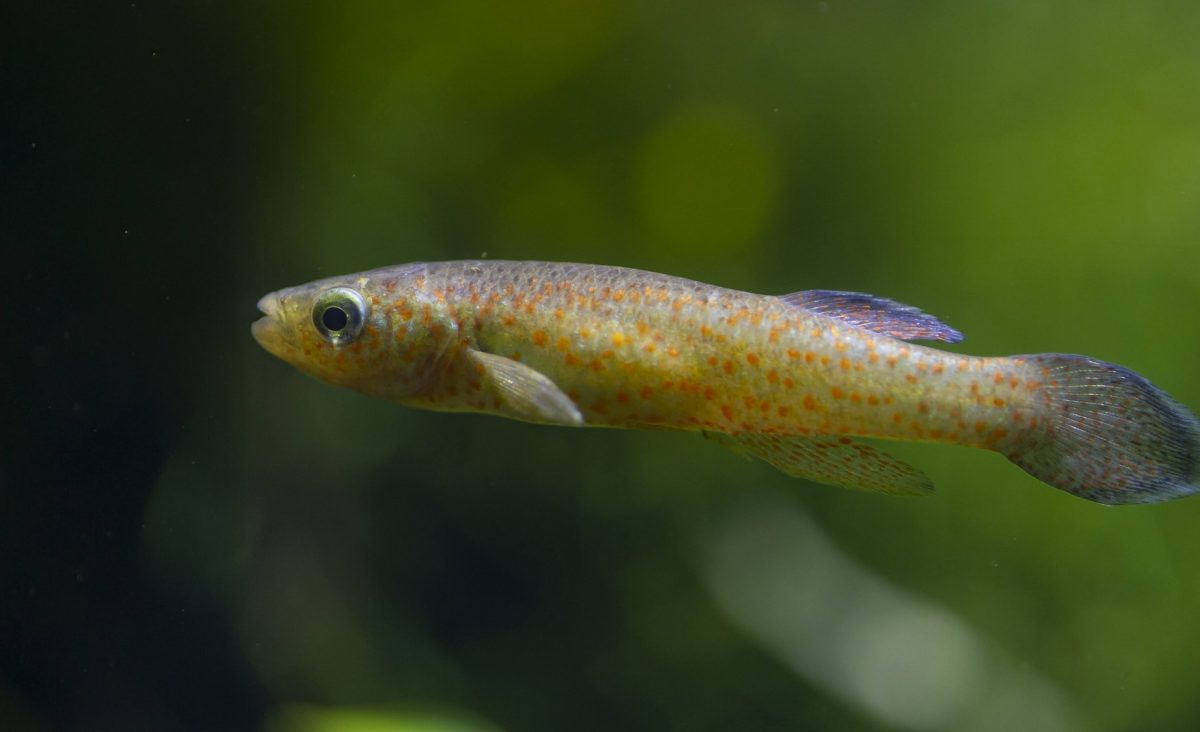
Basically, Dr. Kuhajda says, it’s bad news on top of more bad news.
“This is not a feel-good story,” he says. “It’s just an almost impossible situation to manage, and it’s really rough on aquatic animals.
“Exceptional droughts can inflict huge damage on these headwater species, especially endangered species with only a few populations left.”
In November 2016, Chattanooga and other parts of Southern Appalachia were parched during another exceptional drought. That event prompted a collaborative “rescue” of wild Barrens Topminnows and Laurel Dace by the Tennessee Aquarium Conservation Institute (TNACI) and U.S. Fish and Wildlife Service (USFWS).
The team drove to drought-ravaged sites in Middle Tennessee and atop Walden Ridge that were known to shelter the last remaining populations of these endangered fish. There, they carefully collected what individuals they could in hopes of safeguarding them until conditions returned to normal or to serve as an “ark population” in the event that the species went extinct in the wild.
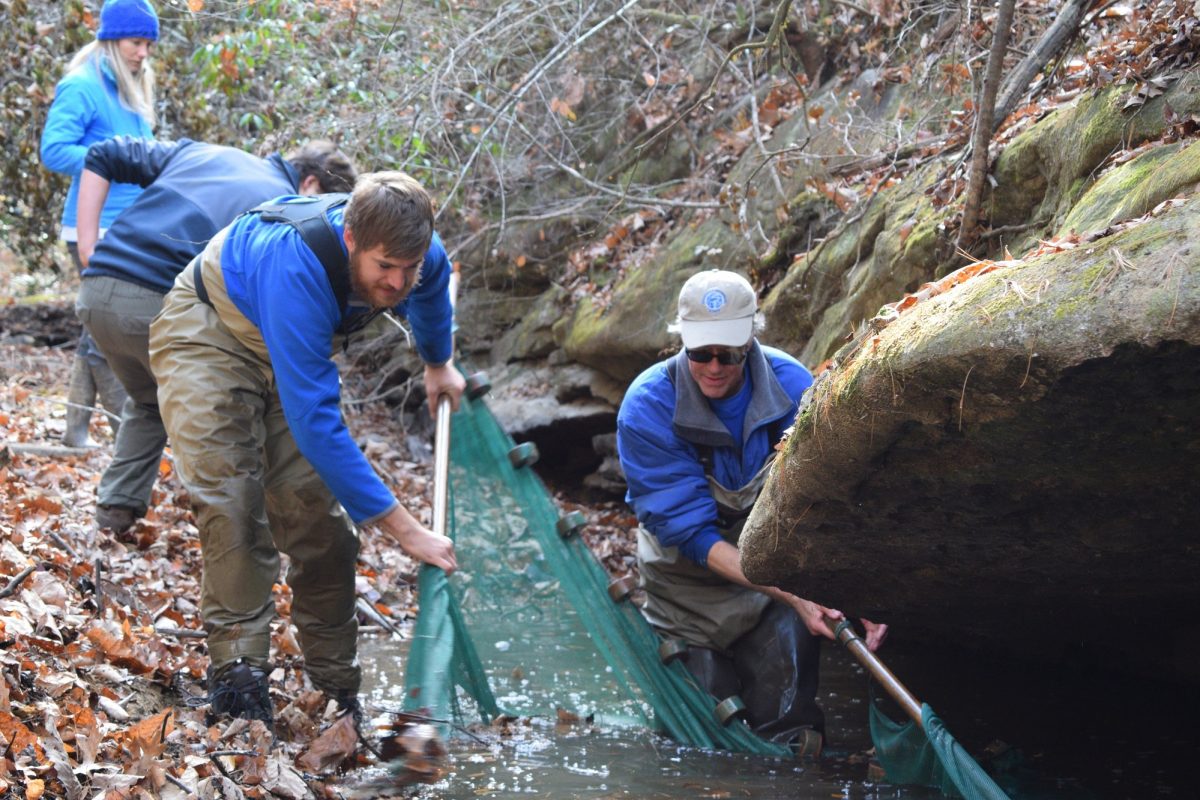
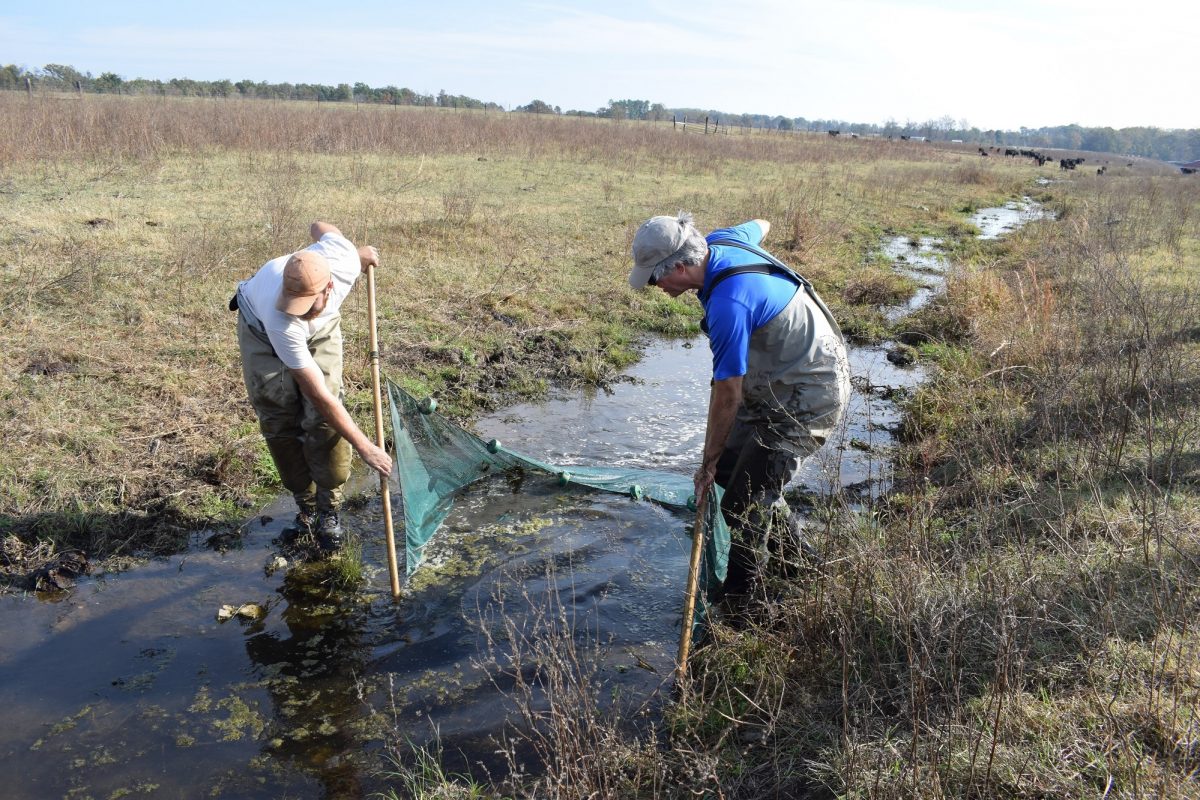
Representatives from U.S. Fish and Wildlife Service and the Tennessee Aquarium Conservation Institute work together to rescue Barrens Topminnows imperiled by an exceptional drought in November 2016.
With the reoccurrence of similar conditions affecting Southeast Tennessee, USFWS and TNACI are now carefully monitoring these populations once again.
“We don’t have a specific threshold for when we start paying attention to how drought is impacting headwater streams, but as the USDA’s U.S. Drought Monitor starts moving to higher levels, it comes to mind,” says Warren Stiles, a listing and recovery biologist at USFWS’s Tennessee Ecological Services Field Office in Cookeville, Tennessee.
To keep tabs on these crucial sites, USFWS relies on making regular, in-person visits to evaluate populations and maintaining good relationships with land owners and state partners who can alert them to any unexpected changes.
Last week, Stiles checked in on Laurel Dace and Barrens Topminnows in Middle and Southeast Tennessee. Drought, he found, was having an impact — consistent, but low, water flow; isolated pools still being fed by groundwater — but conditions had yet to reach a point where another rescue was warranted.

“Headwater streams are especially dependent on groundwater flow, which can be affected by withdrawals, but they sometimes can be surprisingly resilient to drought,” he says. “However, extended drought does continue to stress fish in isolated pools, and the warm weather contributes to that as well.”
There could be a small measure of meteorological relief in the coming days. Scattered rain fell on Chattanooga over the weekend, and extended forecasts by NOAA indicate precipitation chances that are leaning above average for Tennessee, Georgia, and Alabama.
These changes are welcome, but ending such a prolonged drought and restoring the flow to area waterways will take a steady stream of major precipitation events, Dr. Kuhajda says. If there is no significant change to rainfall patterns in the next few weeks, biologists will need to reassess the Barrens Topminnow and Laurel Dace streams again.
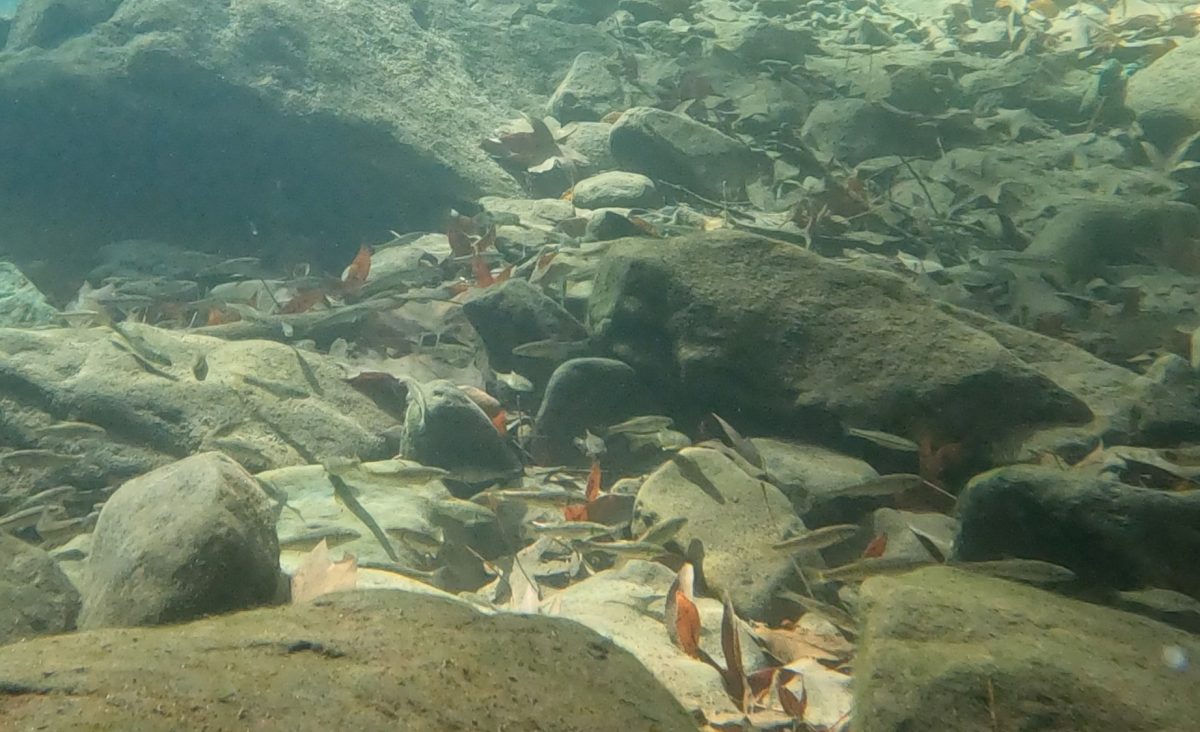
Fish crowd together at the bottom of drought-diminished pools. The forced proximity caused by the drought is just one of many stressors affecting aquatic life brought on by exceptional drought conditions in Southeast Tennessee.
“The ground is so dry right now that hardly any of the rain makes it to the stream,” Dr. Kuhajda says. “We’ll need some pretty significant, major rain events of several inches to get those waters flowing again. It’s getting to a pretty critical point now.”
For more information on the Laurel Dace, visit tnacifin.com/fish/laurel-dace/
To learn more about the Barrens Topminnow, visit tnacifin.com/fish/barrens-topminnow/